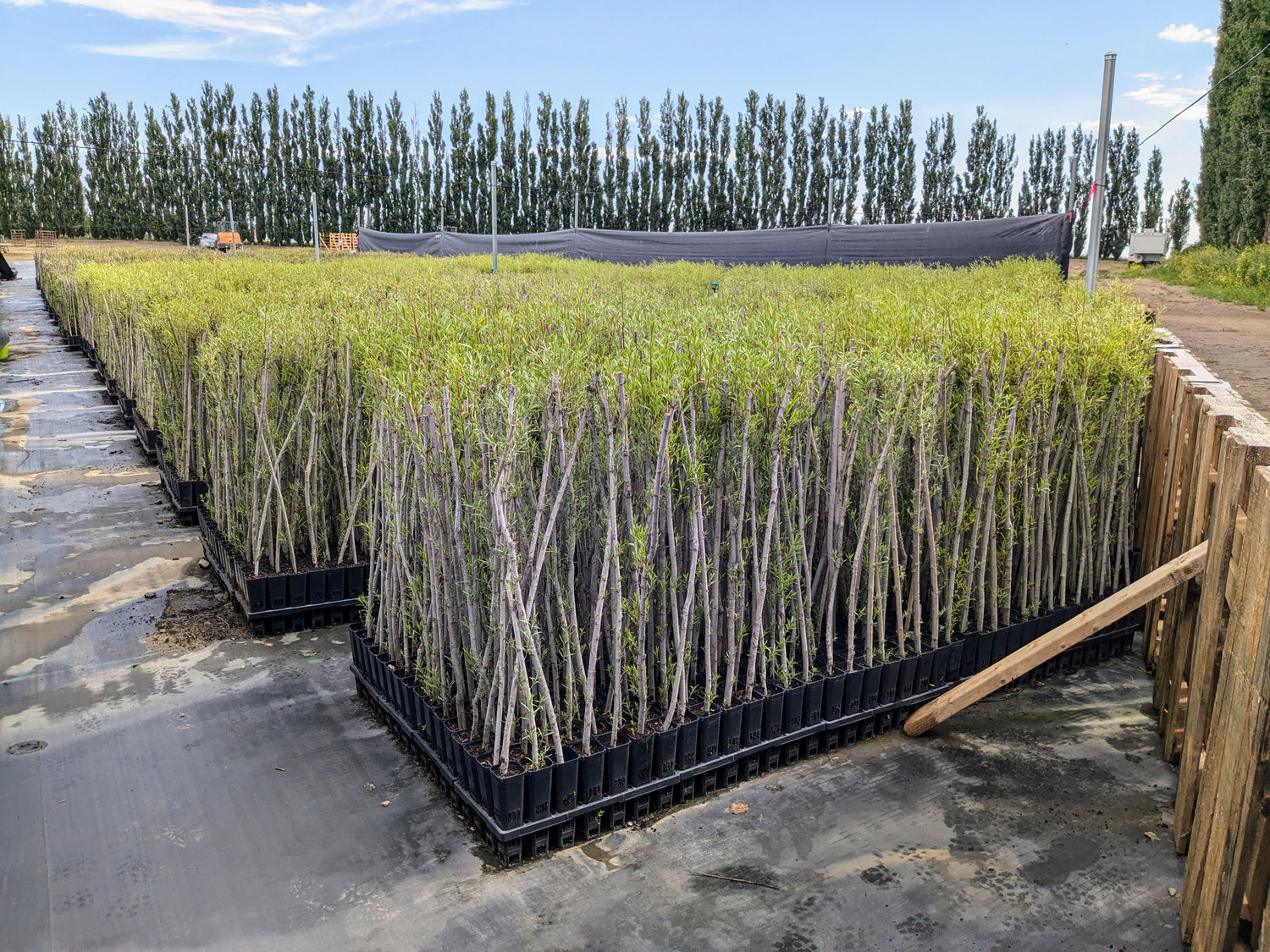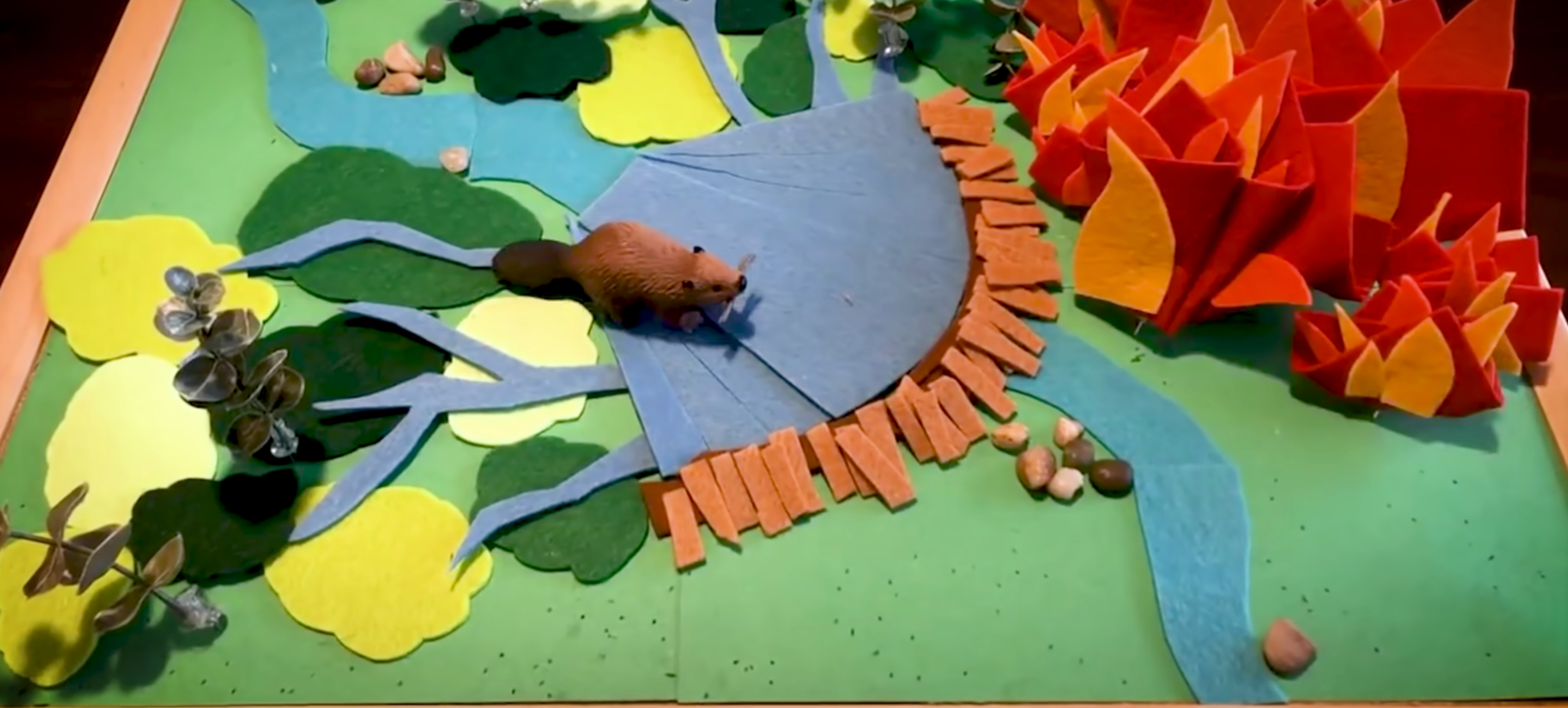Short answer – very likely not. But, as with most things in life, there's another way... and we’ll get to that shortly.
Live stakes are magical. You can take a stick, push it into the ground, and boom—it’ll grow roots, shoots, and become a whole new plant. It’s basically like wizardry for trees. Of course, it only works if you follow the steps in the spellbook exactly (and maybe have a little bit of luck). The allure of live staking is so simple that many well-meaning groups jump on it as the ultimate riparian super solution. Get some sticks in the ground, pat yourself on the back, and—ta-da!—job well done.
 The first year might even look amazing! You will feel like you’ve just unlocked a new power in a nature-based video game. The stems explode with fresh green leaves, and everyone’s feeling pretty good about life. But here’s the kicker: Year Two. Suddenly, everything's not so green. Maybe your site got flooded in spring, and those live stakes that were submerged for a month? They're dead... Or perhaps the gravelly soil acted more like a bonsai pot, squeezing the life out of your fresh stakes. Let’s not even mention the aggressive grass and other plants muscling in and choking your poor, defenseless willows. Turns out, it’s not quite as easy as sticking a twig in the ground and walking away.
The first year might even look amazing! You will feel like you’ve just unlocked a new power in a nature-based video game. The stems explode with fresh green leaves, and everyone’s feeling pretty good about life. But here’s the kicker: Year Two. Suddenly, everything's not so green. Maybe your site got flooded in spring, and those live stakes that were submerged for a month? They're dead... Or perhaps the gravelly soil acted more like a bonsai pot, squeezing the life out of your fresh stakes. Let’s not even mention the aggressive grass and other plants muscling in and choking your poor, defenseless willows. Turns out, it’s not quite as easy as sticking a twig in the ground and walking away.

So, what’s the deal with planting timelines?
Live staking typically happens in the spring or fall, just like most restoration plantings. These windows give plants the best chance to establish. It’s kind of like giving them a solid start in the race of life. But what about our construction timelines? They don’t care about the delicate timing needed for live staking. So, sometimes you end up planting live stakes in August, which sounds fine in theory—until you check on them next spring and see that fewer than 10% have survived.

Why is that? Well, those little stakes use up all their stored energy in the first few months, pushing out that beautiful green growth. By the time they hit deep fall, they’re exhausted. They haven’t had enough time to store energy for winter or new growth in the spring, and so, like that wilted plant you forgot to water for a month, they die. It’s a bummer.
But don’t lose hope just yet! There’s a clever solution.

Drumroll, please... it’s called Tall Rooted Stakes (TRS).
Sounds fancy, but it’s pretty simple: give those live stakes a head start. Instead of throwing them directly into the ground and hoping for the best, we let them grow some roots first. By the time they get installed, they’ve already got a small root ball and some fresh foliage on top. It’s like sending them to plant boot camp—they’re stronger, tougher, and ready to take on whatever the summer site throws at them.

With a tall rooted stake, you can plant in summer and actually expect them to thrive. No more watching your live stakes turn into dead sticks. TRS are the summer planting solution that’ll have your willows establishing vigorously and thriving for years to come.
So, if you're staring down a summer live stake installation date and wondering if your live stakes will make it—give TRS a try. Your team will thank you.

Now, if you're thinking, “TRS sounds like the perfect solution!”—you’re absolutely right. But here's the kicker: for a summer installation, these tall rooted stakes need to be harvested in winter and grown out during the spring. This means you’ve got to plan ahead. Don’t wait until summer is knocking on your door to start thinking about live stakes—by then, it’s too late.
If you want to ensure a successful project, reach out to us early! Book your TRS custom growing ahead of time, and we’ll make sure your stakes are harvested, grown, and ready to thrive when planting time hits. It’s all about timing, and we’re here to help you get it right.



1 comment
Chris Banman
Amazing read, keep up the good work Ninjas!
Leave a comment
All comments are moderated before being published.
This site is protected by hCaptcha and the hCaptcha Privacy Policy and Terms of Service apply.